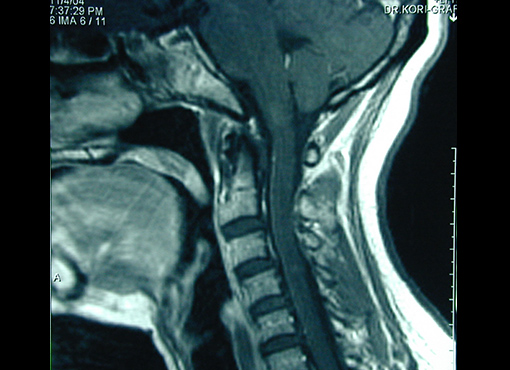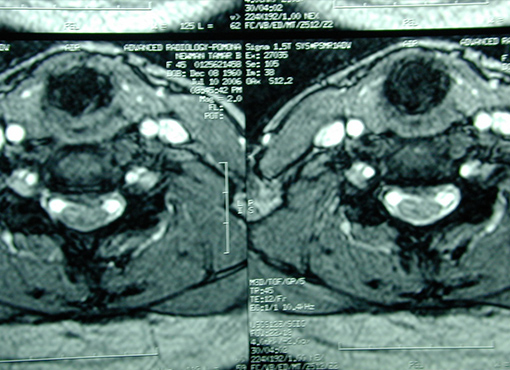
What is Cervical Spinal Stenosis?
Cervical stenosis is a condition characterized by a narrow spine, which can result in the compression of the spinal cord. Compression of the spinal cord is the most common cause of cervical myelopathy, a disturbance in the function of the spinal cord. Cervical stenosis may be congenital, meaning that you are born with a narrow spine or it may be acquired and result from the herniation of a disk or the development of a bone spur. Frequently, it is a combination of both congenital and acquired problems.
Signs & Symptoms
Cervical stenosis only causes symptoms if it causes compression of the nerve roots or spinal cord. If so, the patient is said to have radiculopathy (compression of a nerve) or myelopathy (compression of the spinal cord).
The symptoms of radiculopathy are limited to pain, weakness or numbness in one arm. The symptoms of myelopathy are much more diffuse and can be quite confusing. Patients with this condition may complain of headache which may be confused with a migraine. They also complain of nausea, vomiting, dizziness, vertigo, sensitivity to sound, light and smells, widespread pain, weakness, clumsiness, balance problems, difficulty with memory and concentration, urinary urgency and frequency, disturbances in bowel habits, and fatigue. These symptoms are identical to those of a Chiari Malformation.
Testing & Diagnosis
Cervical myelopathy is diagnosed by detailed history and physical examination.
Myelopathy can be so baffling that the first step in diagnosing myelopathy is for the physician to suspect it. The cause of myelopathy is determined by an MRI scan which will show spinal stenosis and spinal cord compression. Other causes of myelopathy besides spinal stenosis include multiple sclerosis, vitamin B-12 deficiency, spinal cord tumor, syringomyelia, AVM of the spinal cord, and Chiari malformation. These should all be considered in evaluating the patient.
If you are a new patient, please contact us.
Treatment
The treatment of spinal stenosis may include surgical and non-surgical therapies. Non-surgical therapies include medications and neck immobilization with a collar or by traction. Surgical therapy involves relieving the compression of the spinal cord by enlarging the spinal canal. There are several ways to accomplish this depending on the cause of the compression.


